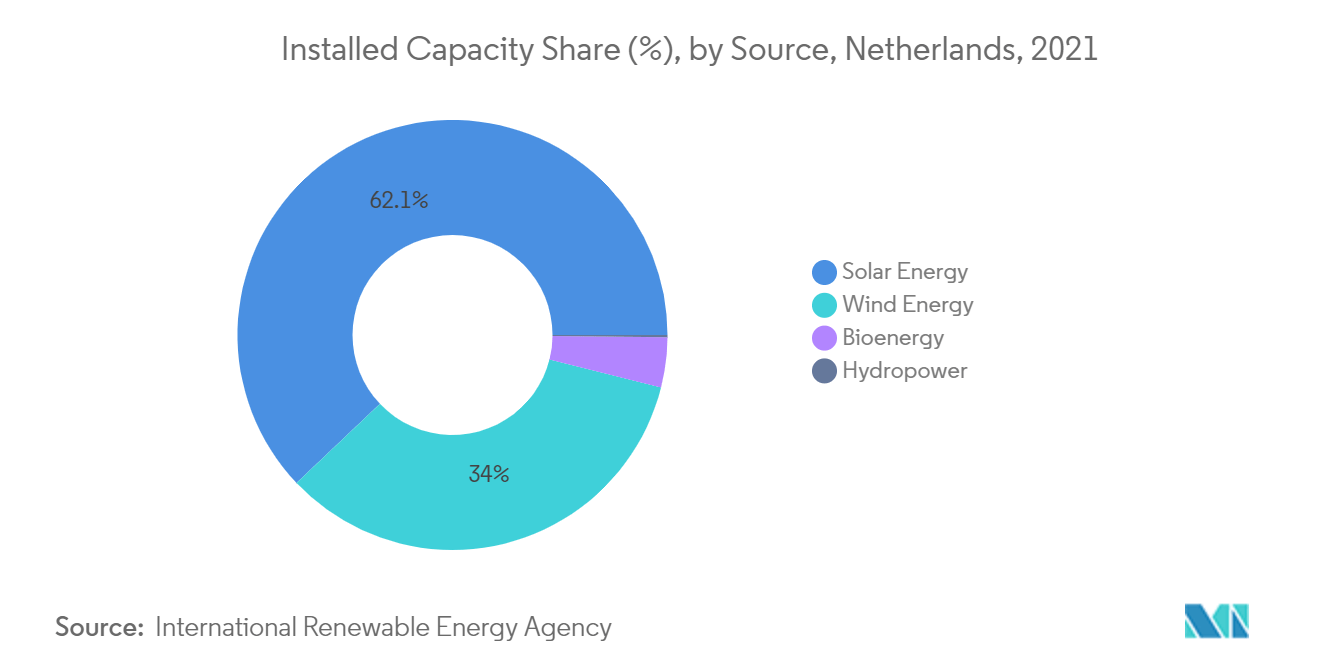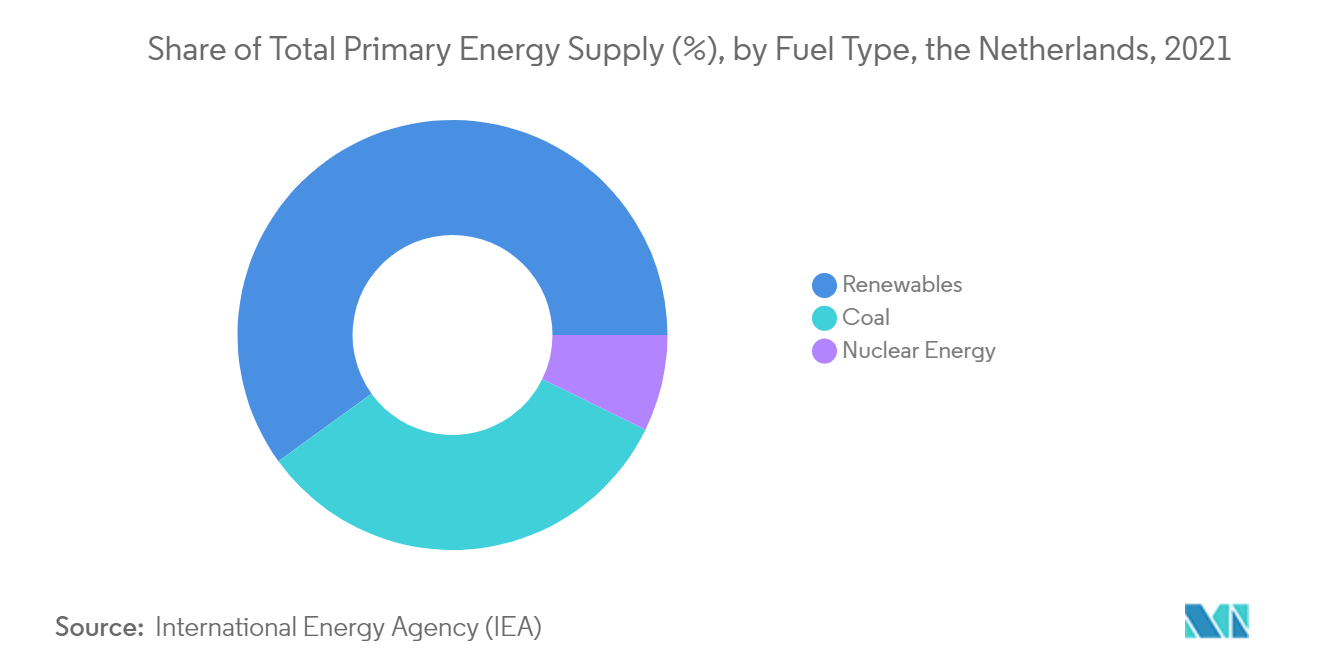Market Trends of Netherlands Renewable Energy Industry
This section covers the major market trends shaping the Netherlands Renewable Energy Market according to our research experts:
Wind Energy is Expected to Witness Significant Growth
- Under the Paris Climate Agreement, 70% of the Dutch electricity needs, that is, a total of at least 84 terawatt-hours (TWh), must be generated sustainably (solar or wind power) by 2030. More than half (49 TWh) is expected to be generated by offshore wind farms, while the other 35 TWh is likely to come from onshore wind farms and onshore solar power plants.
- By 2030, 70% of the current electricity consumption of the country is expected to come from wind or solar energy. That equates to 84 terawatt-hours (TWh). More than half of this will come from offshore wind energy (49 TWh). The remaining 35 TWh comes from wind and solar energy on land.
- Additionally, an effective offshore wind policy framework in the country is driving rapid deployment and aims for 49 TWh of generation by 2030.
- Vattenfall (a wind energy company) is expected to construct and operate its second unsubsidized wind farm in the Dutch North Sea. After its completion in 2023, the wind farm is expected to generate around 760 MW of electricity, which is enough to provide for 2.5% of the country's electricity needs. Vattenfall also received the permit to build subsidized wind farm sites in the country in 2018.
- Hence, with increasing investments in the wind energy sector and favorable government policies, the industry is expected to witness a significant surge during the forecast period.

Government Initiatives May Drive the Market
- The country is actively trying to drive its wind power sector to meet its goals set under the Dutch Climate Agreement announced in June 2019. Under the agreement, the Netherlands aims to cut CO2 emissions by 49% by 2030, a significant increase over its 2020 goal of 25%.
- The agreement also fixes volumes for the expansion of wind energy to 2030: 7.5-8.5 GW of onshore and 11.5 GW of offshore wind. It sees renewables providing 75% of electricity in the Netherlands by 2030.
- There is strong government support for the further development of the wind and solar power sectors in the country, including a positive regulatory system, ambitious targets for capacity, and incentives to encourage investment in the sector.
- Hence, the Dutch renewable energy market is expected to grow significantly during the forecast period due to an increase in environmental awareness, upcoming projects, and a push to reduce dependence on fossil fuels that are mostly imported from other countries.


